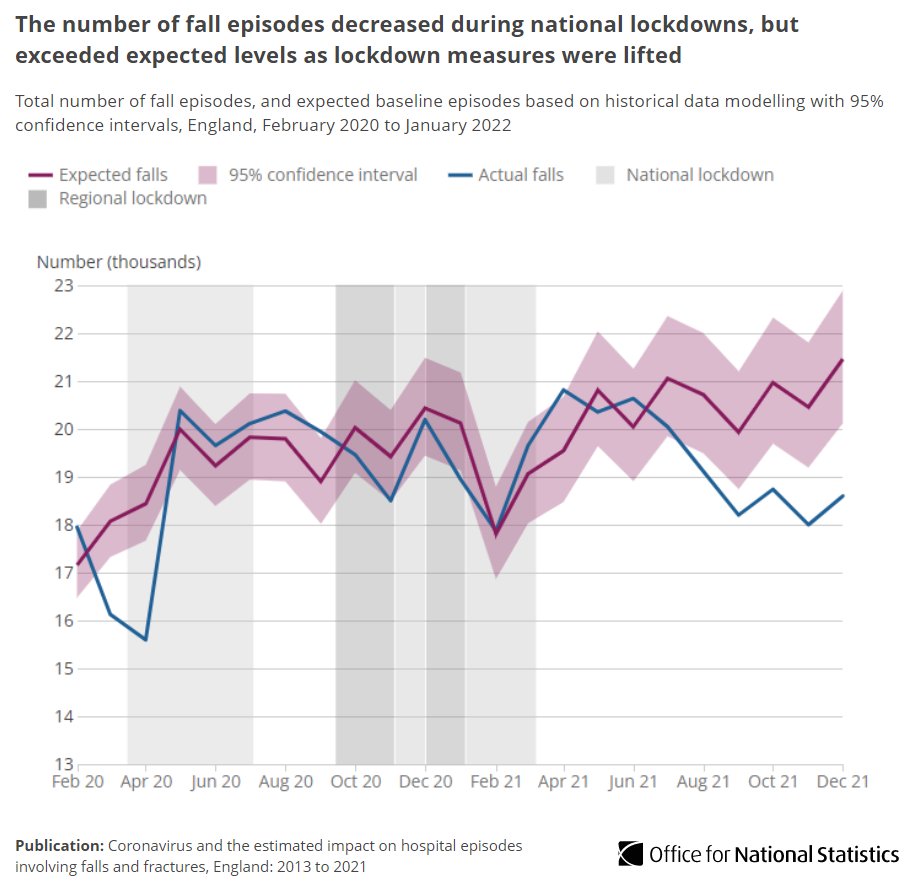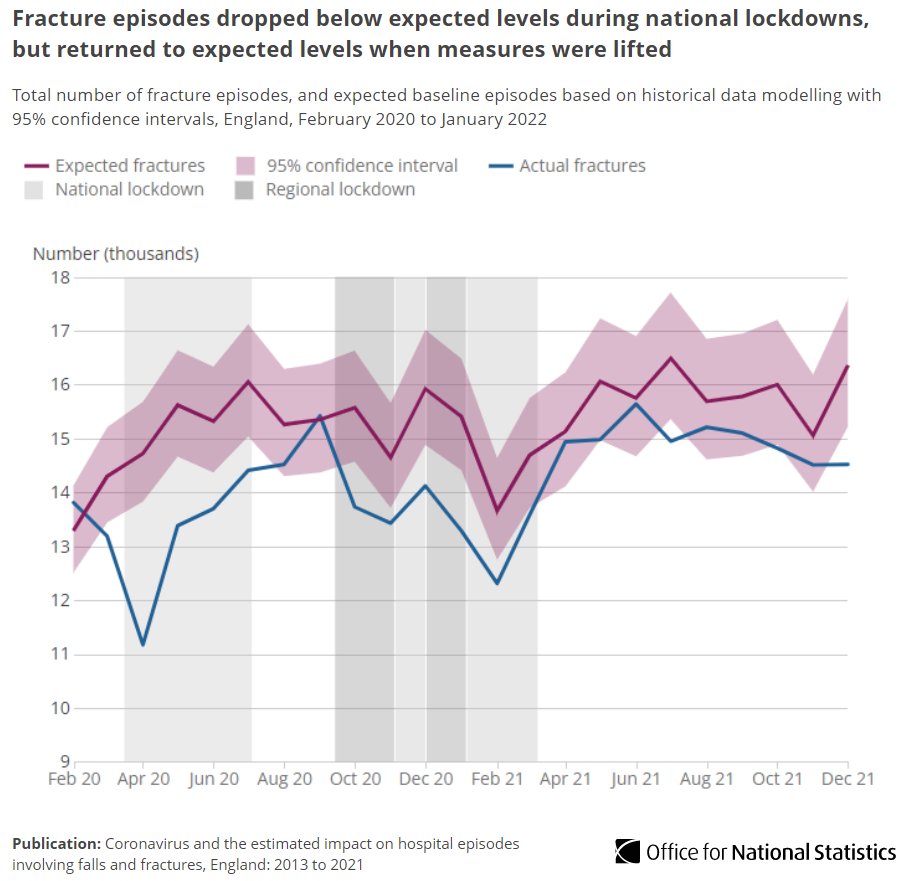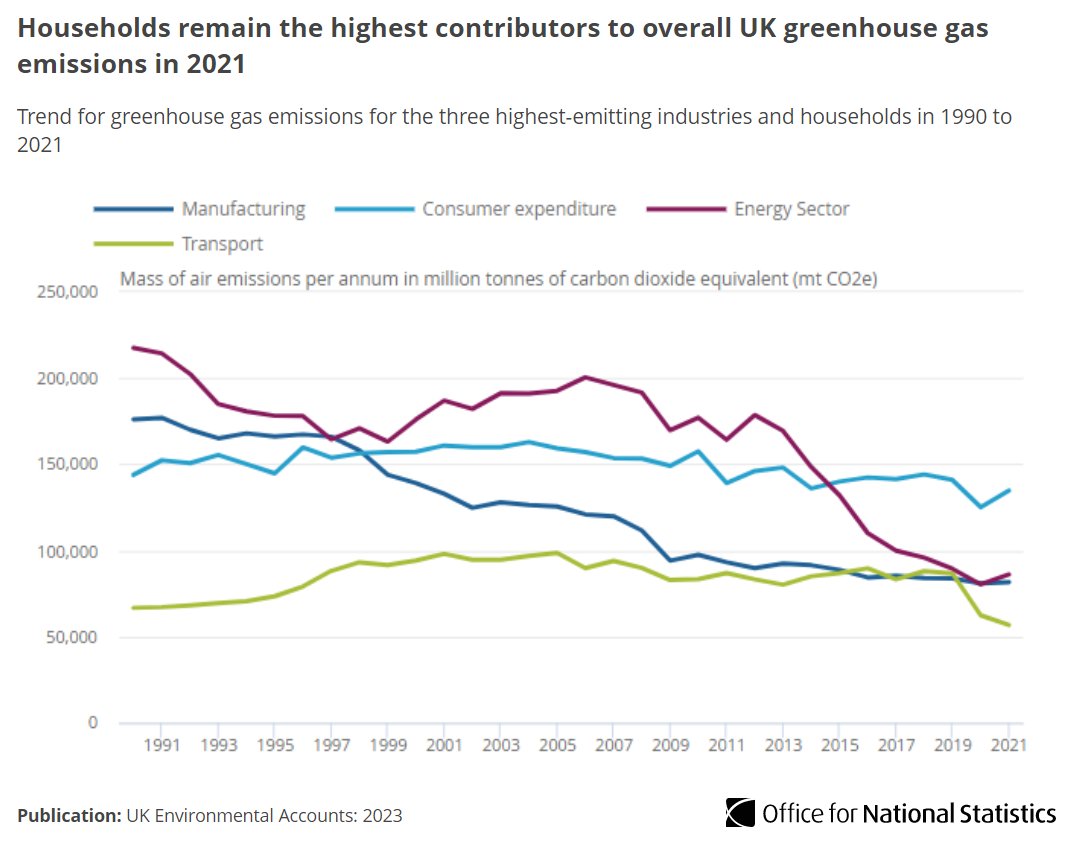There are 10 national parks in England and 3 in Wales - which collectively cover 10.97% of land in England and Wales 🏞️
New #Census2021 data shows 399,400 people lived in these parks in 2021 (0.67% of the usual resident population) 🌳
➡️ ons.gov.uk/peoplepopulati…
New #Census2021 data shows 399,400 people lived in these parks in 2021 (0.67% of the usual resident population) 🌳
➡️ ons.gov.uk/peoplepopulati…

In Wales the most populated national park was Bannau Brycheiniog (Brecon Beacons) with 33,500 residents and 15,000 households.
The least was the Pembrokeshire Coast (20,900 residents, 9,800 households) which had the largest decline (7.6%) in residents of all parks since 2011.
The least was the Pembrokeshire Coast (20,900 residents, 9,800 households) which had the largest decline (7.6%) in residents of all parks since 2011.

In England, the top three national parks with the most usual residents and households were:
▪️ the South Downs (113,300 residents, 48,600 households)
▪️ the Lake District (39,000 residents, 17,800 households)
▪️ the Peak District (35,900 residents, 16,200 households)
▪️ the South Downs (113,300 residents, 48,600 households)
▪️ the Lake District (39,000 residents, 17,800 households)
▪️ the Peak District (35,900 residents, 16,200 households)
Compared with residents elsewhere in England and Wales, national park residents were more likely to:
🎓have a higher level of education
🧓 be retired
💬 speak English (English or Welsh in Wales) as a main language
🎓have a higher level of education
🧓 be retired
💬 speak English (English or Welsh in Wales) as a main language

National park residents tended to be older on average than the population elsewhere.
The median age was higher in every national park (ranging from 49 to 57 years) than it was in other parts of England (39 years) and Wales (41 years) 👩🦳️
➡️ ons.gov.uk/peoplepopulati…
The median age was higher in every national park (ranging from 49 to 57 years) than it was in other parts of England (39 years) and Wales (41 years) 👩🦳️
➡️ ons.gov.uk/peoplepopulati…
• • •
Missing some Tweet in this thread? You can try to
force a refresh

 Read on Twitter
Read on Twitter
















